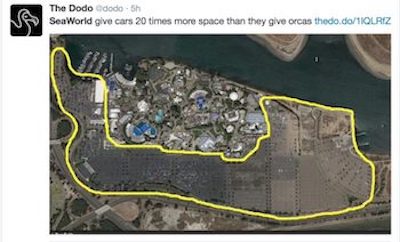According to World Animal Protection’s report Behind the smile, published in 2019:
“A single dolphin can generate between 400,000 and 2 million USD per year for a venue, depending on frequency of use. … Add to that additional income channels through merchandise, food and accommodation, and the revenue is even greater. It is literally a multi-billion dollar industry – and all on the back of the suffering of wild animals.”
At the time, there were 336 dolphin entertainment venues in the world, spread across 54 countries, and holding a total of 3,029 captive dolphins. With orcas (really a species of dolphin but not counted in the total above), belugas and a handful of other species, the number of captive cetaceans worldwide lands at about 3,600.
No question, we’re talking about a whole lot of money here, but what do these numbers really mean for those of us who hope to bring this exploitative form of entertainment to an end? We’re taking on an industry with much deeper pockets than ours when it comes to funding a PR campaign. But there’s much more going on behind the numbers.
On the face of it, the kinds of revenues generated by captive dolphins suggests that a $100,000 USD purchase price looks like a sound investment. Remember that those living under the best conditions generate 4 times that every year. Conversely, if the laws of the jurisdiction you operate in will allow it, you can work that dolphin hard enough to generate 20 times that original purchase price annually. Of course, the cynical downside is that you’ll need the replenish them more often, with all the extra costs involved for transport, training and so on. Either way, it all seems to make sense from an economic point of view, for anyone willing to overlook the utter immorality of the entire enterprise.
However, building and maintaining a dolphinarium is expensive. Even with tanks that are tiny relative to a dolphin’s natural range (about 1/200,000th in fact), it’s no small matter to keep a dolphin alive, fed, supplied with veterinary care etc. There is a break-even point for every facility as to how many people they need to get into the seats in order to get to profitability. Our task as activists is to try to prevent them from getting there.
Consider the image above. The size of the parking lot, relative to that of the tanks, suggests that SeaWorld is very much aware that they need to attract a significant number of patrons to make their business model work. Our best weapon against them is to raise awareness enough that too few will want to be there. Shrink the size of the potential pool of patrons, in other words. It’s really that simple – though getting there won’t be.
Here’s the bad news, and it’s based on a conclusion I’ve drawn from observing our public discourse over the last couple of years. When I got into this it was with the assumption that all we had to do was bring to the public’s attention the truth behind dolphin captivity, and we’d put an end to it. To this day I still believe that the overwhelming majority of people, having come to understand what life is really like for a captive dolphin, will immediately cease to be potential consumers of what marine parks and aquaria are offering. That part hasn’t changed. The number of people who will remain indifferent to the dolphins’ suffering would be insufficient to keep an aquarium in business. Unfortunately, that’s not all there is to it.
What I’ve learned is that it isn’t just those who will remain indifferent when faced with the facts – they’re probably too few to matter. It’s the number that we’ll never influence to pay attention that are the much bigger obstacle to our success. There are so many things competing for our attention now, compounded by the fact that we’re using such disparate sources of information that many of us never begin to consider an opposing point of view, or to take in information which doesn’t correspond to how we already see the world. It suggests that many of us may never be presented with an opportunity to consider the horrific conditions behind a dolphin’s capture, or to know anything about their essential nature and intelligence. If we don’t learn to see them for what they really are, the moral questions involved in holding them captive will never gain our attention.
The implication of this is that aquariums may well be able to remain at least somewhat profitable indefinitely. Stated another way, it means that no matter how well-funded and effective our awareness raising campaigns may be, we may need to accept the possibility that it won’t get us to where we need to be. Of course, the equation we’re working with continues to change over time, given that we’ve found a younger demographic to be more receptive to what we’ve been trying to say. So maybe one day we get there simply based on public opinion keeping bums out of the seats. But probably not today.
Nevertheless, even if this proves to be the case, it doesn’t mean we’ve lost, and that the nightmare of cetacean captivity must continue indefinitely. It just means that we need to raise awareness sufficiently to incent our policy-makers and politicians to act. It’s what’s happened in Canada and a number of other countries already – legislation is what ultimately got it done. Marineland Canada still has enough customers to keep it in business (though much diminished relative to a few years ago). Unfortunately for them, too many Canadians disagreed that this is a legitimate and morally defensible activity. The belugas, bottlenose dolphins, and one lone orca ‘grandfathered’ under the legislation will be the last captive cetaceans in Canada.
So I guess for now this is the level of public awareness we need to aim for. We’ve had a lot of successes, and can have a lot more.
Still open is the question of whether market forces alone can push down a dolphinarium’s customer base enough to make holding a dolphin in captivity too expensive to be profitable. We haven’t produced much evidence this is the case so far. But it’s also true that we’ve got a long way to go to achieve anywhere near full penetration with our message. So time will tell.
For now, there are simply way too many of us who remain completely unaware of what the personal cost is to any individual dolphin sentenced to a lifetime in captivity. So let’s keep working on changing that.
For The Orca’s Voice,
Dani, Canadian Cetacean Alliance



Leave a Reply